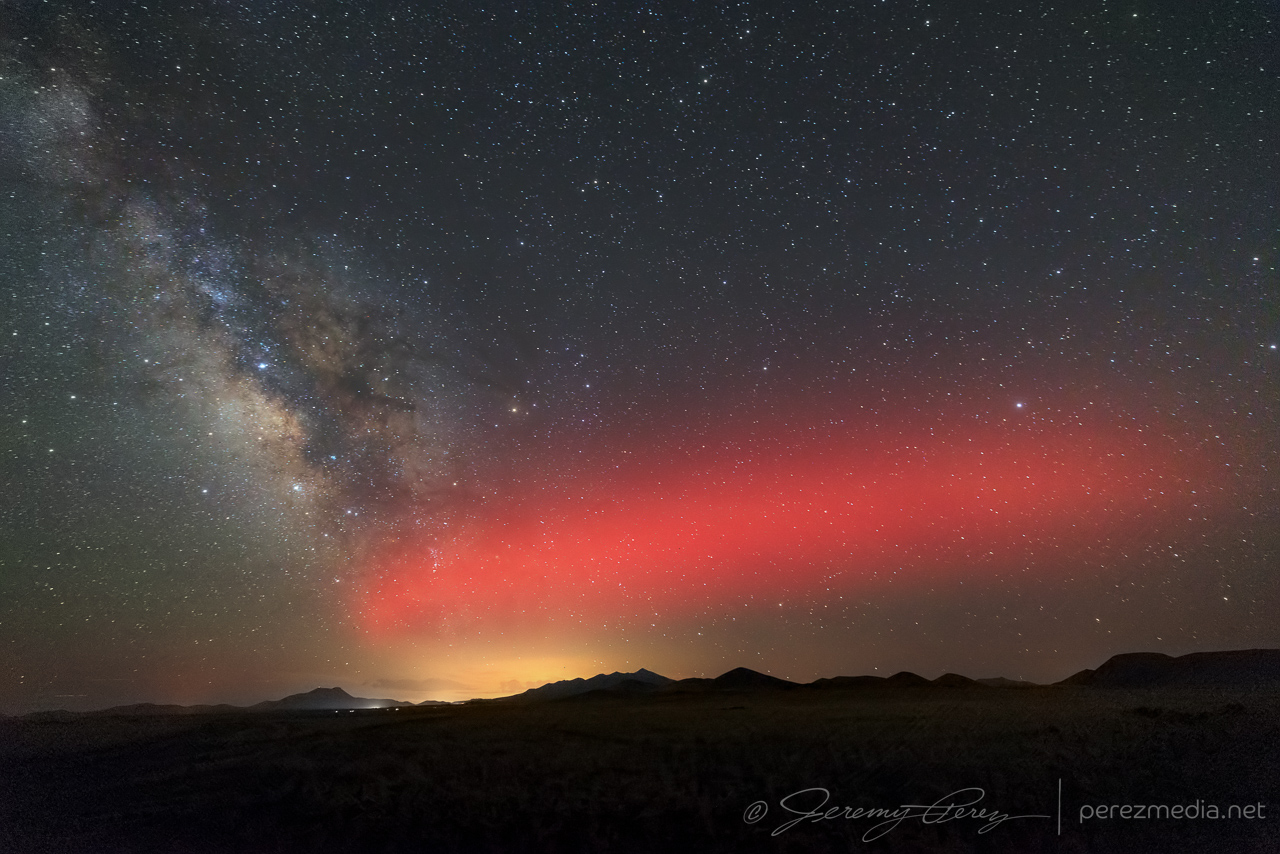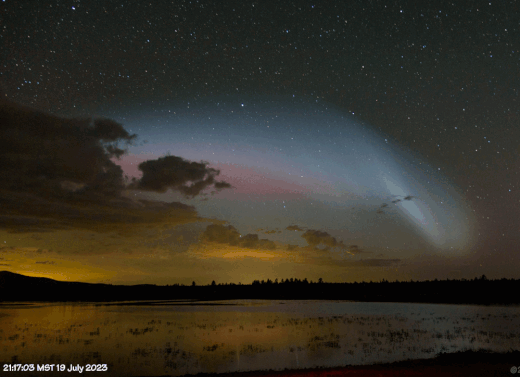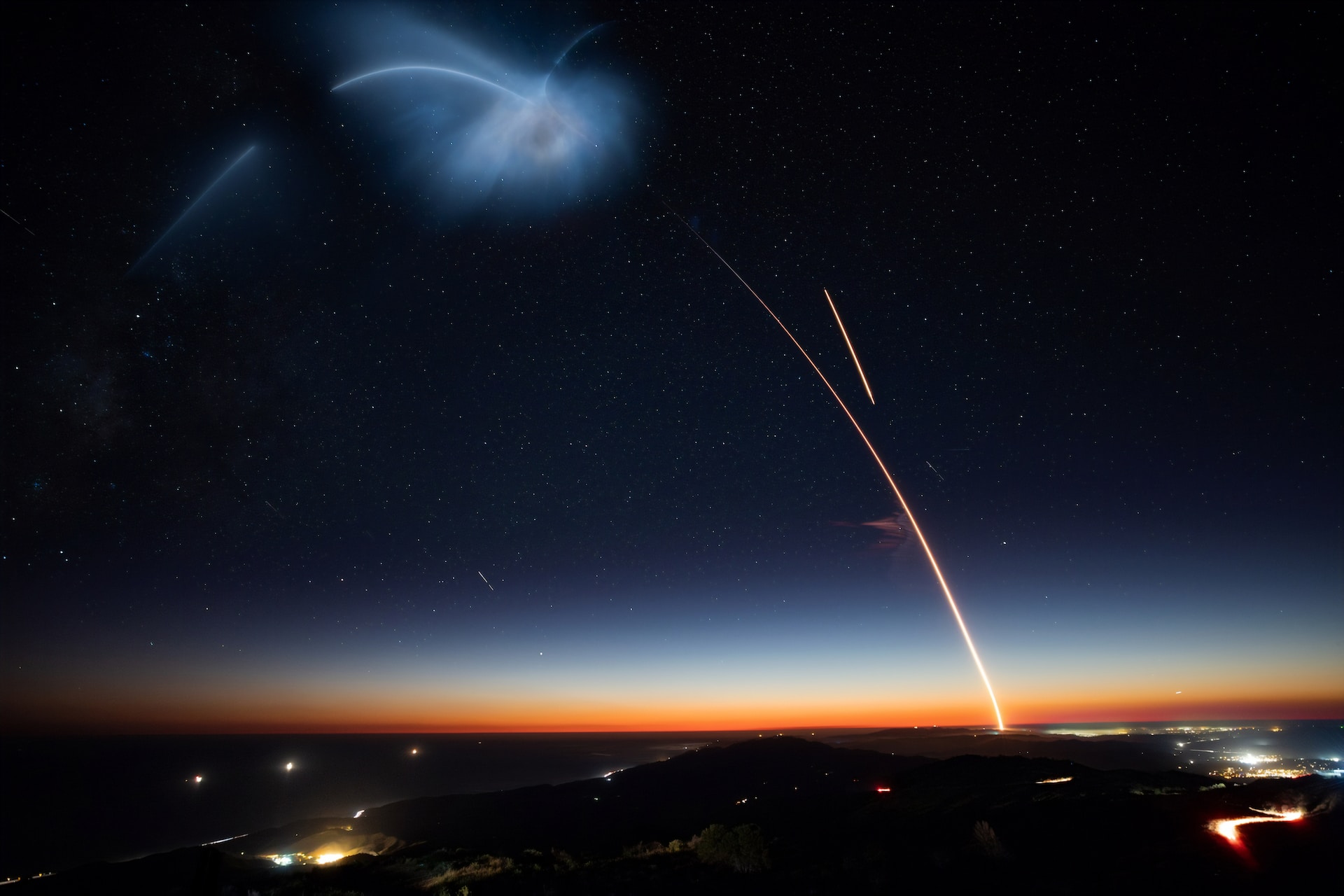On July 19, Jeremy Perez recorded a red afterglow of the “punched” ionosphere near the Milky Way galaxy. The hole was created by the Falcon 9 rocket with its exhaust gases during orbit entry.

“After the rocket passed overhead, a red fluorescent glow expanded southward and crossed over the Milky Way. It was visible for almost 20 minutes,” Perez tells SpaceWeather.
Perez explained that the red light was not very bright from his vantage point on the San Francisco volcanic field, near Flagstaff, Arizona. Therefore, the astrophotographer relied on the photosensitivity of his camera to capture an unusual phenomenon.
Ionospheric disturbance from rockets
The ionosphere is the upper layer of the Earth’s atmosphere, where space begins and where auroras form, located at an altitude of 80 to 640 km above the surface. The ionosphere is filled with charged particles called ions, and it is from there that the light of the auroras comes. The solar plasma reaches the ions and creates impressive colors of the auroras.
The red glow was a direct result of the fact that the rocket, which launched from the Vandenberg Space Force Base in California, punched a hole in the ionosphere. This is not the first time this has happened.

This is a well studied phenomenon when rockets are burning their engines 200 to 300 km above Earth’s surface. The red glow appears when exhaust gasses from the rocket’s 2nd stage cause the ionosphere to recombine quickly,” space physicist Jeff Baumgardner from Boston University tells SpaceWeather.
Rockets spray water and carbon dioxide during flight, which can change the ionization of the ionosphere. Newsweek notes that the characteristic red color of the hole in the ionosphere is the result of the combination of oxygen ions with rocket exhaust gases, which emit the same light as the red aurora.
Last Wednesday, a hole in the ionosphere even affected GPS systems, but only reduced the accuracy of location determination over the region where the flight took place by a few meters.
There will be more holes in the atmosphere
Ionospheric “holes” are becoming more common due to the record number of rocket launches led by SpaceX, sending Starlink satellites into low Earth orbit. Radio amateurs may notice them when short-wave signals suddenly stop passing through the horizon, shooting through holes instead of being reflected from the ionosphere and returning to Earth. Sudden GPS errors can also be the result of these anomalies. These effects may be unpleasant, but they are short-term. Regeneration of the ionosphere occurs immediately with sunrise.

Earlier, we reported how a terrible vortex formed in the sky over Hawaii due to the flight of a SpaceX rocket.
Follow us on Twitter to get the most interesting space news in time
https://twitter.com/ust_magazine
